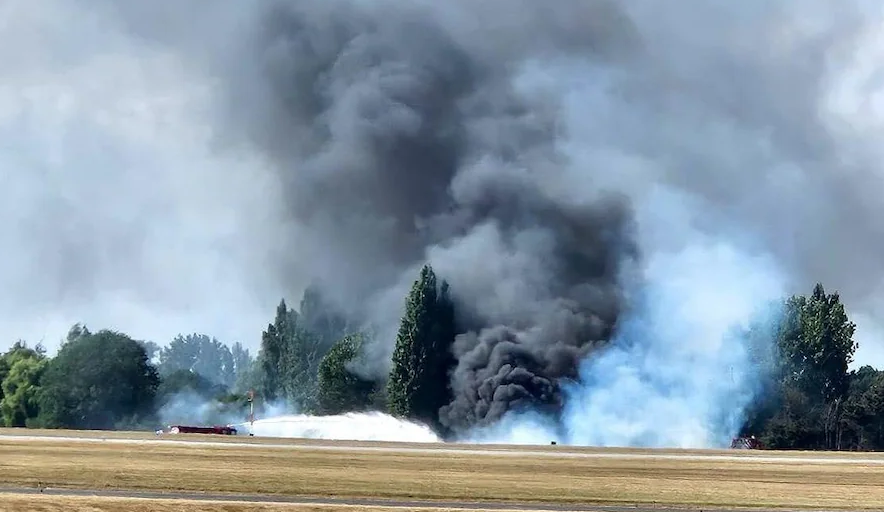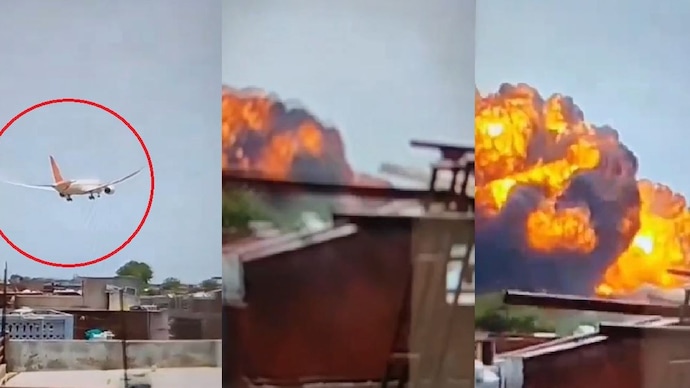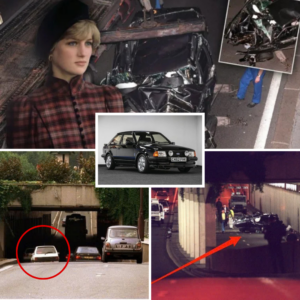On Sunday, July 13, 2025, a Beechcraft B200 Super King Air, operated by Dutch company Zeusch Aviation, crashed moments after takeoff from London Southend Airport in Essex, United Kingdom, erupting into a massive fireball that claimed the lives of all four passengers onboard. The incident, captured in harrowing video footage, bears striking similarities to the catastrophic Air India Flight 171 crash in Ahmedabad, India, just a month prior on June 12, 2025. Both accidents involved sudden, catastrophic failures shortly after takeoff, raising urgent questions about aviation safety, mechanical reliability, and potential parallels in their causes. This article explores the details of the Southend crash, its eerie resemblance to the Indian disaster, and the broader implications for global aviation safety.
The Southend Airport Crash: A Fiery Tragedy
The Beechcraft B200 Super King Air, registered as PH-ZAZ, was a twin-turboprop aircraft en route to Lelystad, Netherlands, after arriving from Pula, Croatia, via Athens earlier that day. The aircraft, known for its versatility in medical evacuations, private charters, and light freight transport, took off from runway 05 at London Southend Airport around 3:55 p.m. local time. According to Flightradar24 data, the plane reached a maximum altitude of just 175 feet before it abruptly banked sharply to the left, inverted mid-air, and plummeted nose-first into a field near the runway perimeter, triggering a massive explosion and thick plumes of black smoke visible for miles across Essex.
Eyewitness accounts paint a chilling picture of the event. John Johnson, a 40-year-old plane spotter from Billericay, Essex, was at the airport with his family, watching planes take off. He recounted to the BBC, “You could see [the pilots] smiling and we all kind of smiled back. The aircraft then powered up its engines and took off. About three or four seconds later, it started turning sharply to the left, flipped, and crashed head-first into the ground.” Johnson described a “huge fireball” that erupted upon impact, a scene corroborated by social media videos showing a blazing inferno and dense smoke rising from the crash site.


Emergency services responded swiftly, with Essex County Fire and Rescue deploying five fire engines, off-road vehicles, and specialist units to extinguish the blaze. The East of England Ambulance Service sent four ambulances, a hazardous area response team, and an air ambulance. Nearby facilities, including the Rochford Hundred Golf Club and Westcliff Rugby Club, were evacuated as a precaution, and London Southend Airport was closed indefinitely, disrupting flights, including those operated by easyJet.
The Air Accidents Investigation Branch (AAIB) of the UK, in collaboration with the Dutch Safety Board (OVV), has launched a detailed investigation. Zeusch Aviation issued a statement confirming the involvement of their flight SUZ1 and pledged full cooperation with authorities, expressing condolences to those affected. Among the victims was María Fernanda Rojas Ortíz, a 31-year-old German citizen born in Chile, who was reportedly a flight nurse on her first day of a new job. Her family launched a fundraiser to cover expenses, highlighting the profound personal toll of the tragedy.
Parallels with the Air India Disaster
The Southend crash bears an unsettling resemblance to the Air India Flight 171 disaster in Ahmedabad, India, on June 12, 2025, which killed 241 of the 242 people onboard and several on the ground. The Boeing 787-8 Dreamliner, bound for London Gatwick, crashed into a medical college hostel just 30 seconds after takeoff, having climbed to only 625 feet. Like the Southend incident, the Air India plane issued a mayday call before plummeting, with verified footage showing a low, unsteady flight path followed by a massive explosion upon impact.


Preliminary investigations into the Air India crash revealed that the fuel cut-off switches were flipped seconds after takeoff, a highly unusual action that experts described as baffling. The switches, designed with a lever-lock mechanism to prevent accidental activation, were confirmed to have been manually engaged, though it remains unclear whether this was intentional or a result of pilot error. No mechanical failures or fuel contamination were identified, and the deployment of the Ram Air Turbine (RAT) indicated a major systems failure. The investigation, involving India’s AAIB, the US National Transportation Safety Board (NTSB), and Boeing, is ongoing, with cockpit voice recorders providing critical but inconclusive clues.
Both crashes share critical similarities:
Rapid Onset Post-Takeoff: Both aircraft failed to gain significant altitude—175 feet for the Beechcraft and 625 feet for the Boeing—before crashing within seconds of leaving the runway.
Sudden Loss of Control: Eyewitnesses in both cases reported abrupt maneuvers—the Beechcraft’s sharp left bank and inversion, and the Air India plane’s low, unsteady descent—suggesting a loss of lift or thrust.
Catastrophic Impact and Fireball: Both incidents resulted in massive explosions and fires, complicating recovery efforts and victim identification.
Unclear Causes: While the Air India crash pointed to the fuel cut-off switches, the Southend crash’s cause remains under investigation, with experts speculating about engine failure, pilot error, or mechanical issues.
BBC correspondent Tom Symonds noted that the Southend crash’s profile, with the plane veering left, suggests a possible loss of power in the left engine. He referenced a 2017 crash in Australia involving a Beechcraft B200, where throttle levers slipping back reduced engine power, a known issue with the model. However, the Beechcraft’s ability to fly on one engine raises questions about why the pilots could not maintain control.
Historical Context and Safety Concerns
The Beechcraft B200 Super King Air, manufactured by Textron Aviation, is a reliable twin-turboprop aircraft with over 7,500 units produced since the 1970s. Priced at approximately $7.78 million as of 2023, it is widely used for medical evacuations, short-haul charters, and freight transport due to its versatility and performance. The aircraft can carry up to 20 passengers, though the Southend configuration reportedly had eight seats for luxury charters. Despite its strong safety record, the model has a history of takeoff-related accidents, often linked to pilot error rather than mechanical failure.
A 2014 crash in Wichita, Kansas, saw a B200 crash into a building after the pilot applied incorrect rudder input following a left engine power reduction. Similarly, a 2017 crash in Melbourne, Australia, killed five when the pilot lost control shortly after takeoff. The NTSB and other investigators have noted that pilot training, familiarity with the aircraft, and adherence to emergency procedures are critical factors in preventing such accidents.
The Air India crash, marking the first fatal incident involving a Boeing 787-8 Dreamliner, raised additional concerns about bird strikes, a known issue at Ahmedabad’s airport, which reported 38 incidents in 2022–23. However, no evidence of bird strikes has been reported in the Southend crash, and the dry weather conditions likely exacerbated the fire but were not a primary cause.
Implications for Aviation Safety
The similarities between these crashes underscore the need for rigorous investigation and enhanced safety protocols. The Southend incident has reignited discussions about the Beechcraft B200’s throttle lever design and the adequacy of pilot training for emergency scenarios. The Air India crash has prompted calls for cockpit video recorders to clarify pilot actions, a recommendation echoed by the NTSB. Both cases highlight the critical nature of the takeoff phase, where aircraft are most vulnerable to mechanical or human errors.
Aviation experts, including former investigator Shawn Pruchnicki, emphasize that catastrophic failures during takeoff are rare but often result from a combination of factors, such as pilot confusion, mechanical anomalies, or environmental hazards. The AAIB’s investigation into the Southend crash will likely focus on the aircraft’s maintenance history, the pilots’ actions, and potential issues with weight distribution or engine performance. The collaboration with the Dutch Safety Board and input from Zeusch Aviation will be crucial in determining whether this was a preventable tragedy.
Community and Industry Response
The Southend crash has left the local community in shock, with residents and plane spotters like Johnson grappling with the sudden loss of life. The closure of London Southend Airport has disrupted travel, with airlines rerouting flights to other London airports. The Air India disaster similarly devastated Ahmedabad, with families still awaiting DNA identification of victims, a process complicated by the intensity of the crash fire.
Zeusch Aviation’s commitment to supporting the investigation reflects the industry’s focus on transparency and accountability. However, the recurrence of such incidents within a short timeframe has raised public concern about aviation safety, particularly for smaller aircraft like the Beechcraft and large commercial jets like the Boeing 787. Calls for stricter regulations, enhanced pilot training, and technological upgrades, such as cockpit video recorders, are growing louder.
Conclusion
The Beechcraft B200 Super King Air crash at London Southend Airport is a stark reminder of the fragility of aviation safety, even in advanced systems. Its parallels with the Air India Flight 171 disaster amplify the urgency of understanding and preventing such tragedies. As investigations continue, the global aviation community must confront the challenges of mechanical reliability, pilot preparedness, and environmental factors to ensure safer skies. The loss of lives, including that of María Fernanda Rojas Ortíz and the Air India passengers, underscores the human cost of these failures and the need for collective action to prevent future disasters.




